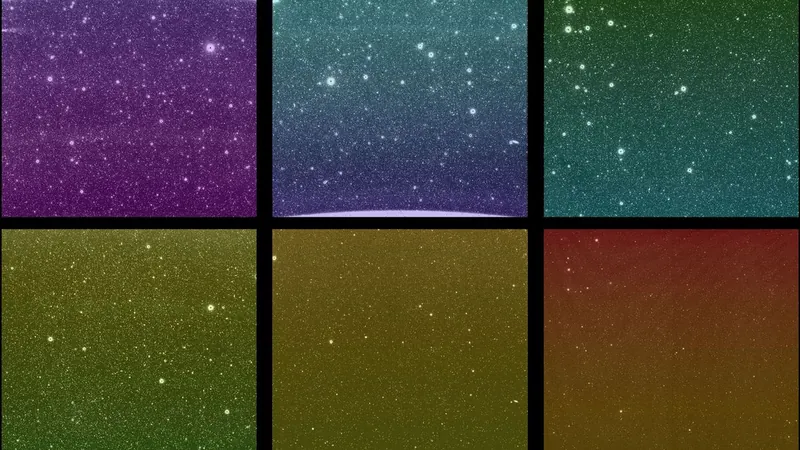
NASA's SPHEREx Telescope Unveils Stunning First Light Images: A New Era in Infrared Astronomy!
2025-04-01
Author: Li
NASA has officially launched its revolutionary infrared space telescope, SPHEREx, marking an exciting leap in our understanding of the cosmos! On April 1, NASA announced that SPHEREx has captured its first light images, a pivotal milestone that confirms all spacecraft systems are functioning optimally. Jamie Bock, the principal investigator at Caltech and NASA's Jet Propulsion Laboratory, proudly declared, "The instrument team nailed it!"
What is SPHEREx?
SPHEREx, an acronym for the Spectro-Photometer for the History of the Universe, Epoch of Reionization, and Ices Explorer, operates similarly to the renowned James Webb Space Telescope but with a unique twist. While both instruments excel in infrared wavelengths—allowing them to see through cosmic dust and explore previously unreachable areas of the universe—SPHEREx focuses on mapping expansive regions around stars rather than delving into their details.
Significance of Initial Images
Although the initial images might not showcase the full artistic potential of SPHEREx, they play a crucial role in the telescope's mission. Each of the six panels in the images corresponds to one of SPHEREx’s six detectors, illustrating the vast area of the sky it can observe—about 20 times wider than the full moon!
The Power of Infrared
What's remarkable about SPHEREx is its ability to analyze the universe in an astounding 102 distinct wavelength bands. These six detectors provide information across 17 wavelength bands each, capturing approximately 100,000 astronomical sources in just a few images. The visualization of these wavelengths, represented in colors perceivable by the human eye, corresponds to infrared wavelengths—where redder colors indicate longer wavelengths and purple represents shorter ones.
Tracing the Universe's History
The significance of infrared astronomy lies in its capability to reveal objects from the infancy of the universe, tracing back to shortly after the Big Bang, 13.7 billion years ago. This is crucial as the universe continues to expand, stretching light wavelengths into the infrared spectrum. In fact, the light we observe from distant cosmic objects shifts from blue to red, ultimately settling into infrared as it traverses the vastness of space.
Current Status and Future Prospects
Currently, SPHEREx's detectors are in the cooling phase, as excess heat could compromise the accuracy of infrared measurements. Once fully operational, the telescope will begin routine science operations in late April, conducting approximately 600 exposures daily.
Investment in the Future
In total, NASA has invested $488 million into SPHEREx, a project that promises to enhance our comprehension of the universe's history and its composition. As we eagerly await its full operational launch, the scientific community anticipates groundbreaking discoveries that could reshape our understanding of the cosmos! Stay tuned for more updates as SPHEREx continues its extraordinary journey through the universe!





 Brasil (PT)
Brasil (PT)
 Canada (EN)
Canada (EN)
 Chile (ES)
Chile (ES)
 Česko (CS)
Česko (CS)
 대한민국 (KO)
대한민국 (KO)
 España (ES)
España (ES)
 France (FR)
France (FR)
 Hong Kong (EN)
Hong Kong (EN)
 Italia (IT)
Italia (IT)
 日本 (JA)
日本 (JA)
 Magyarország (HU)
Magyarország (HU)
 Norge (NO)
Norge (NO)
 Polska (PL)
Polska (PL)
 Schweiz (DE)
Schweiz (DE)
 Singapore (EN)
Singapore (EN)
 Sverige (SV)
Sverige (SV)
 Suomi (FI)
Suomi (FI)
 Türkiye (TR)
Türkiye (TR)
 الإمارات العربية المتحدة (AR)
الإمارات العربية المتحدة (AR)